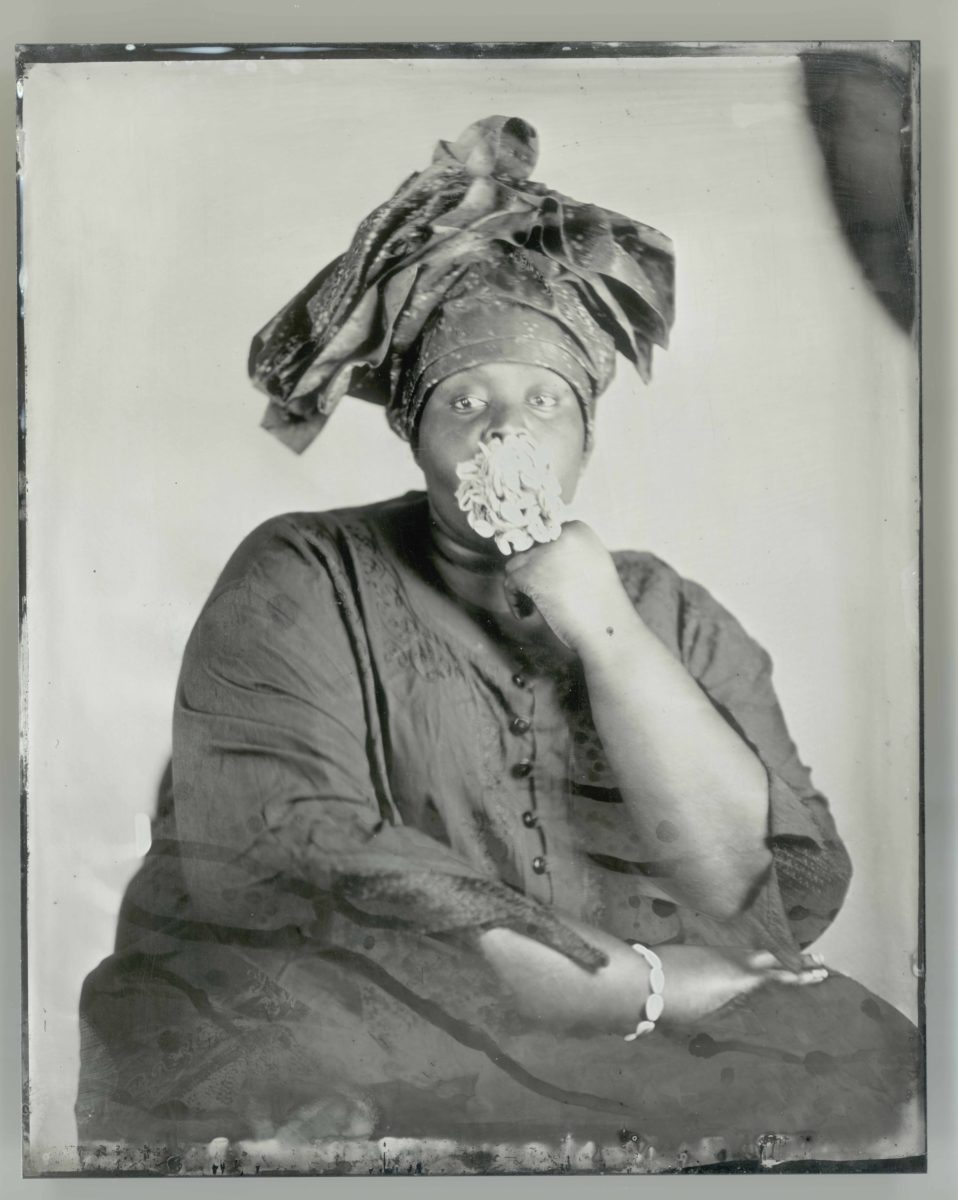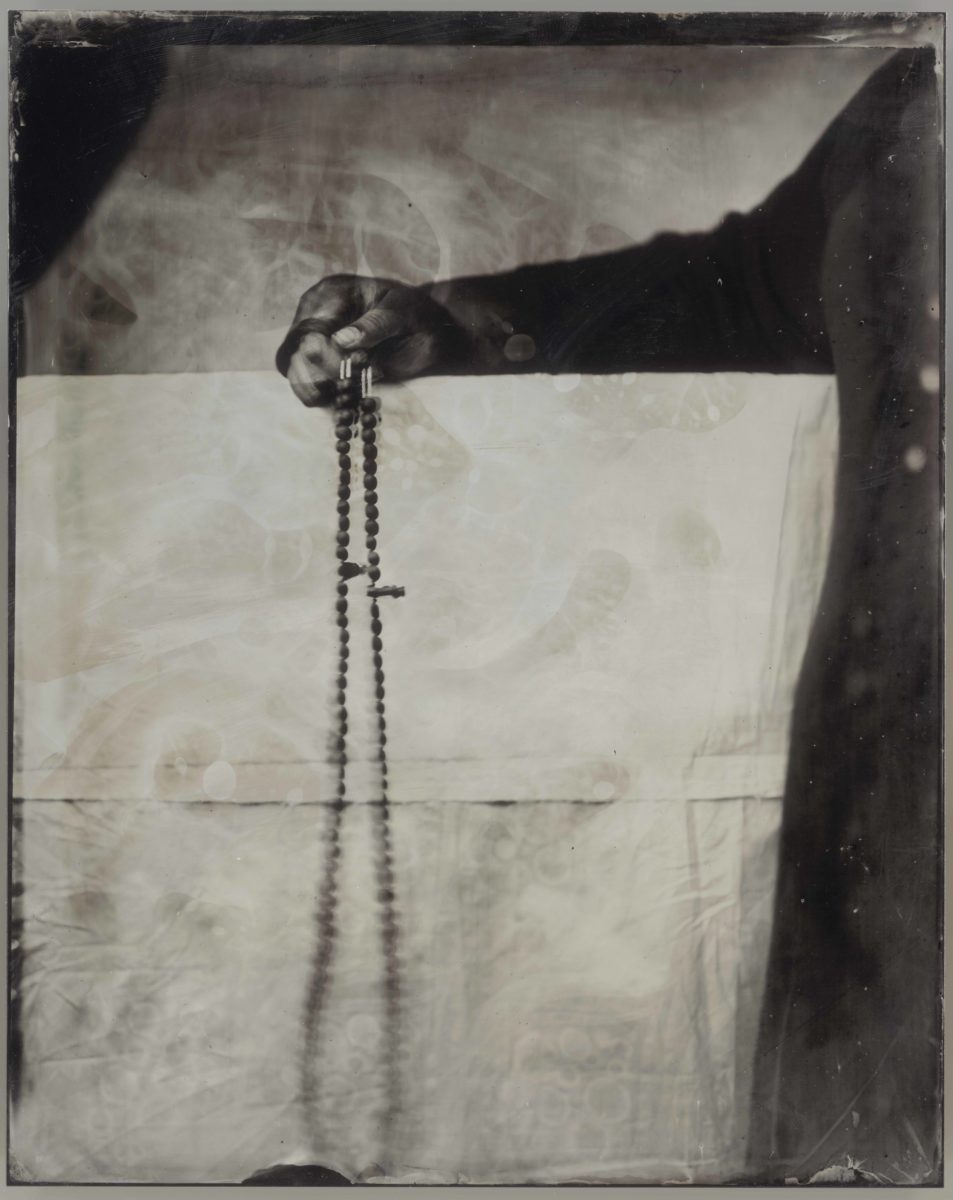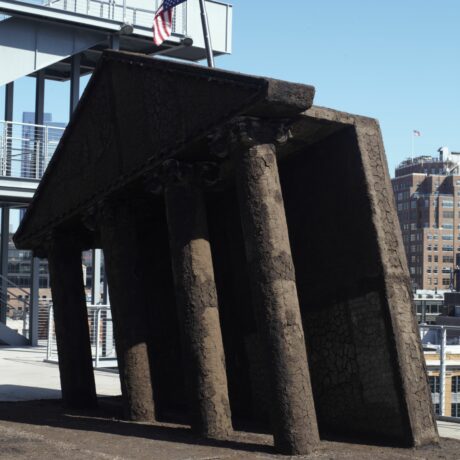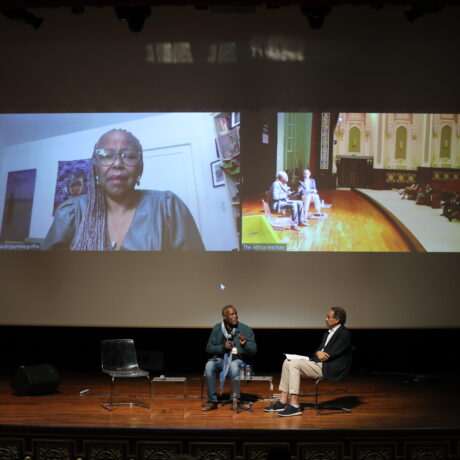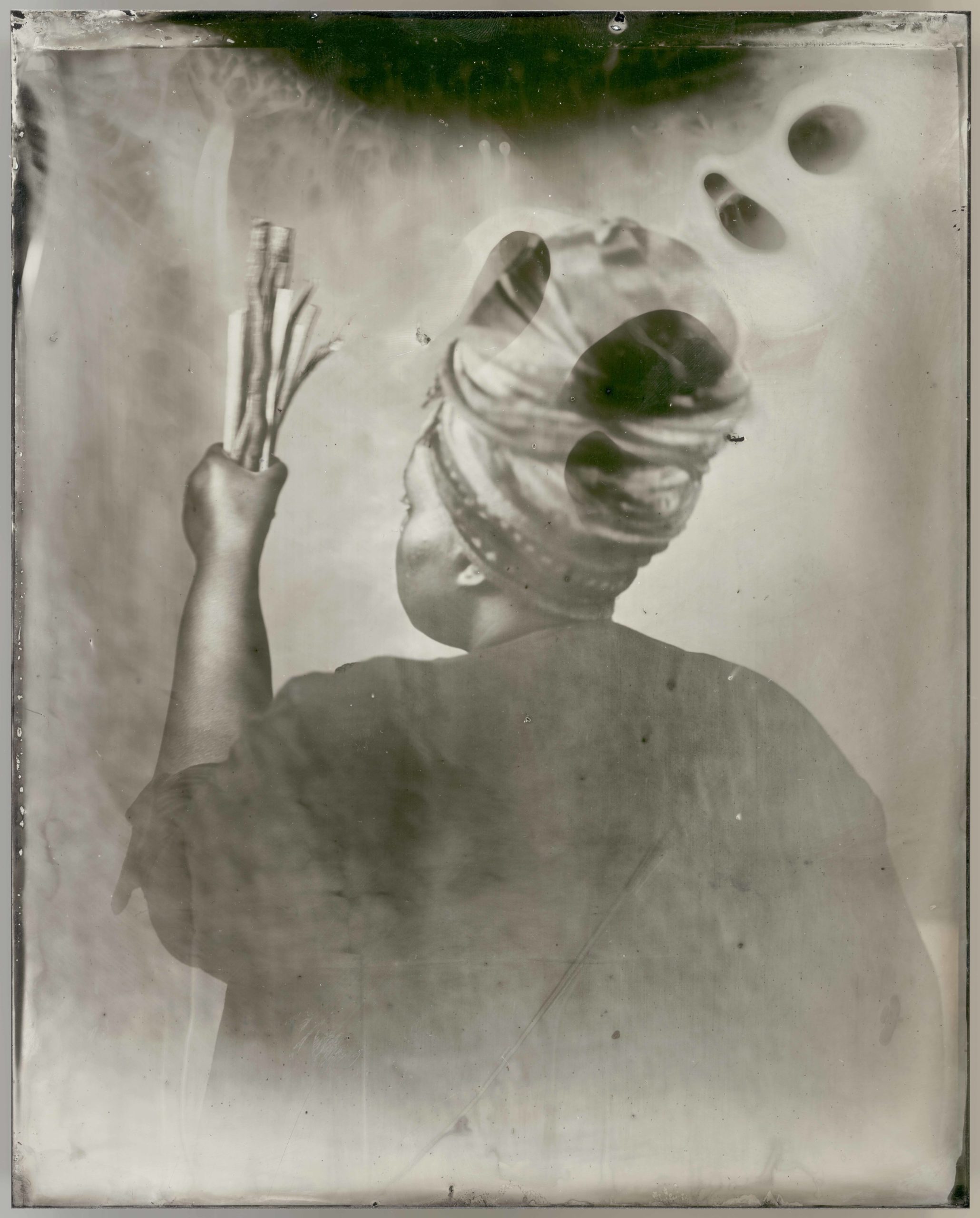
It has been three years since artist Khadija Saye lost her life in the Grenfell Tower fire, along with 71 other victims. The tragedy caused international outrage, and highlighted the extreme socioeconomic and political divides that exist within the borough of Kensington and Chelsea and stretch far beyond. As the public enquiry drags on and campaigners continue to seek justice, the celebration of Saye’s work signals some positive change. The new Khadija Saye IntoArts Programme, which was launched by Tottenham Labour MP David Lammy, brings her art quite literally to the streets.
The initiative is designed to address issues of social inequality and injustice—particularly the lack of diversity in the arts—by creating collaborative, site-specific exhibitions. It builds on the work of IntoUniversity, an educational charity from which Saye gained support from an early age. The first iteration places large-scale prints of her incredible tintype series Dwelling: In This Space We Breathe across the façade of a building in Westbourne Grove, Notting Hill. This new outdoor exhibition gives people from all walks of life the chance to experience her images, which draw on Gambian spiritual practices and present questions of identity, memory and faith.
“This new outdoor exhibition gives people from all walks of life the chance to experience her images, which draw on Gambian spiritual practices”
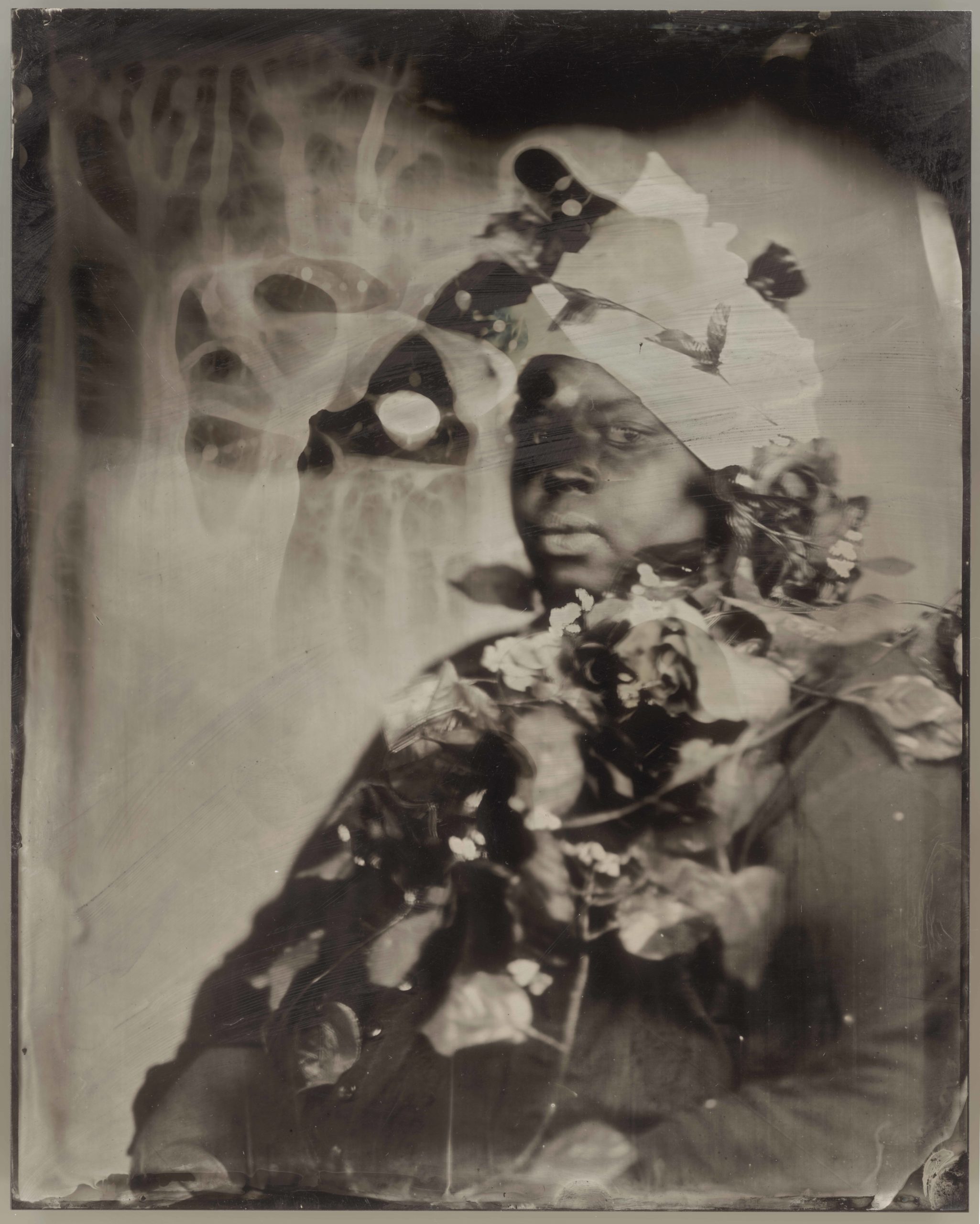
These stunning self-portraits, which are both technically astonishing and aesthetically captivating, were notably celebrated at the 57th Venice Biennale in the Diaspora Pavilion. But the presence of the series in plain sight, in the area so close to the place that Saye called home, will surely imbue them with new meaning, reaching more people than ever before.
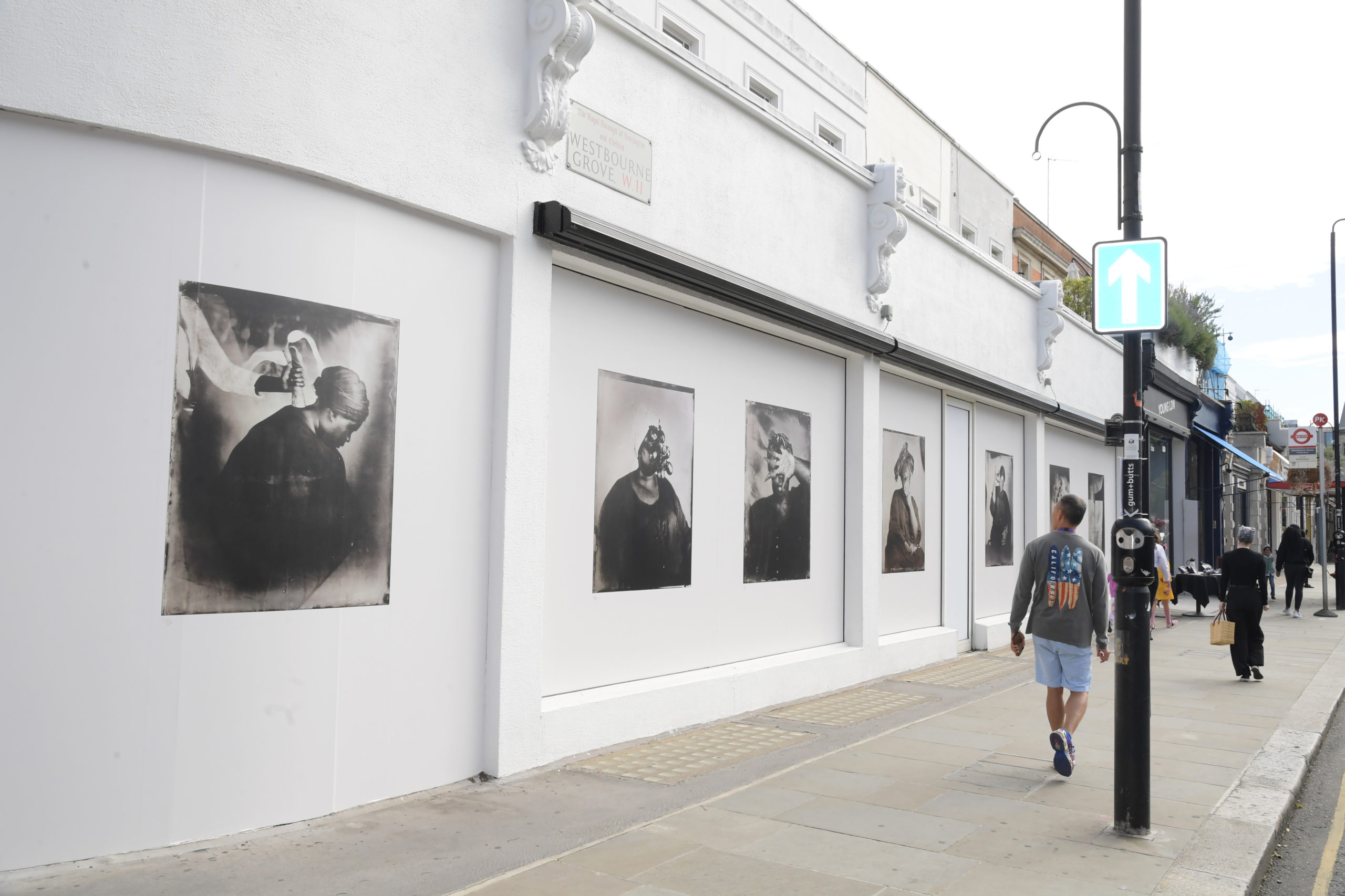
The second exhibition comes from Martyn Ware, whose audio-visual installation To Be Invisible (11 August – 4 September) references the song by Curtis Mayfield and considers recent events associated with the Black Lives Matter movement. It was conceived through collaborations with artist Zachary Eastwood-Bloom and young musicians from Amplify Studios on Portobello Road.
The third instalment by Joy Gregory, titled The Invisible Life Force of Plants (8 September – 9 October), explores the history of botany from the seventeenth to nineteenth centuries, through global trade routes and the symbolic and ritual significance of various plants.
Images courtesy of the Estate of Khadija Saye

